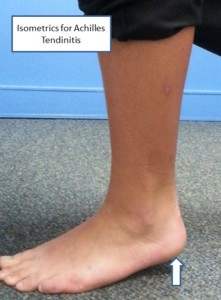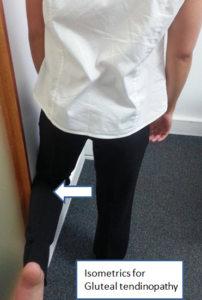How can I help my tendon pain??
Pain arising from a tendon is common in active people and often is related to overuse but research has shown that is can be long lasting and difficult to settle down quickly. Tendinopathy relates to damage to the actual structure of the tendon that involves disorganisation of the tendon matrix (normal makeup of the tendon).
Classically, people with tendon pain relate to pain during activity but find that the tendon tends to warm up during the exercise and pain goes away but returns afterwards.
A recent breakthrough in research into tendon pain (tendinopathy) has shown that specific exercise can settle down tendon pain quickly to allow reduced pain during aggravating conditions.
Past research has concentrated on completing eccentric exercises to help tendon pain but often these are painful thus leading to poor compliance in our clients.
What are the types of exercise?
Well best to describe the 3 common types of exercises we can do.
Isotonic exercise is like lifting weights at the gym. If you think of a biceps curl, the muscle fibres are shortening as you lift the weight then lengthening to lower the weight.
Eccentric exercise is when the muscle lengthens when you are exercising it. Imagine stepping down from a height where you slowly lower your body down.
Isometric exercise is when the muscle contracts but there is no movement. If you push your hands together equally but there is no arm movement then the muscle is contracting but the muscle fibres are not shortening or lengthening.
An Australian researcher, Ebonie Rio, has found that isometric exercise can relieve tendon pain for at least 45 min. She researched volleyball players with chronic knee cap tendon pain (patella tendinopathy) and showed that isometric contractions could relieve pain in an activity that was previously painful! She compared this with isotonic exercise and found that isometric exercise decreased pain in her subjects by 87% by isometric contractions and 42% with isotonic exercise up to 45 min post exercise.
So what does this mean?
Isometric exercise can give you short term pain relief from tendon pain so you can “keep going” like competing in sport during the season or being able to complete some daily exercise with minimal pain. This does not mean that you should not have the problem looked at by one of our experienced physiotherapists but gives you some self-management strategies.
The study used 5 repetitions of 45 secs at 70% of maximum isometric contraction with a 2 minute rest in between. So you need to put a bit of effort into the exercise.
But doing isotonic exercise has also shown to have an effect on tendon pain over 4 weeks, so it is best to do a combination of both.
We can use this theory in other common injured tendon areas like the Achilles, buttock (Gluteal) or hamstring.
Let’s show some examples of exercises for specific tendon conditions;
Patella tendinopathy
Cross your legs over each other with sore knee underneath. Push up and resist with the top leg so no leg movement. Hold 45 secs. Have a 2 minute break. Then repeat. Do 5 sets.

Achilles tendinopathy
Stand on one leg and lift the heel up 1-2 cms off the ground and hold 45 secs. Wait 2 minutes and repeat. Do 5 sets.

Gluteal tendinopathy
Bend your leg and push it out against the wall. Hold 45 secs. Wait 2 minutes and repeat. Do 5 sets. 
So we have listed some ways you can help yourself with tendon pain but if you have a painful tendon then come in get sorted with one of our experienced Physios. Ring 1300 291 133 today.
Reference
Rio et al
Isometric Exercise induces analgesia and reduces inhibition in patellar tendinopathy
British journal of Sports Medicine 2015










